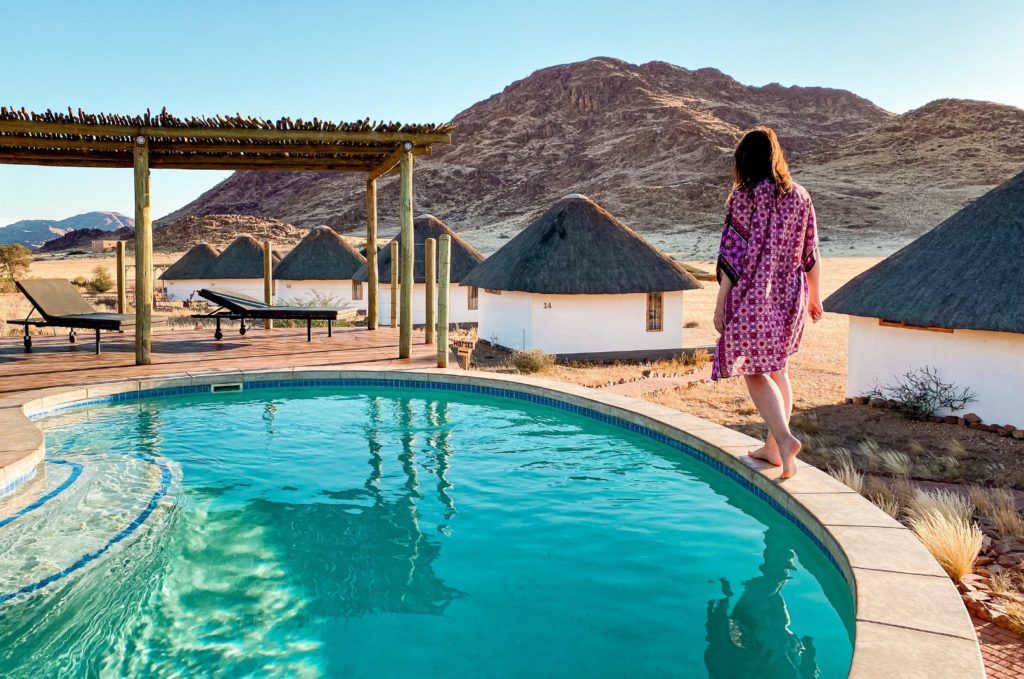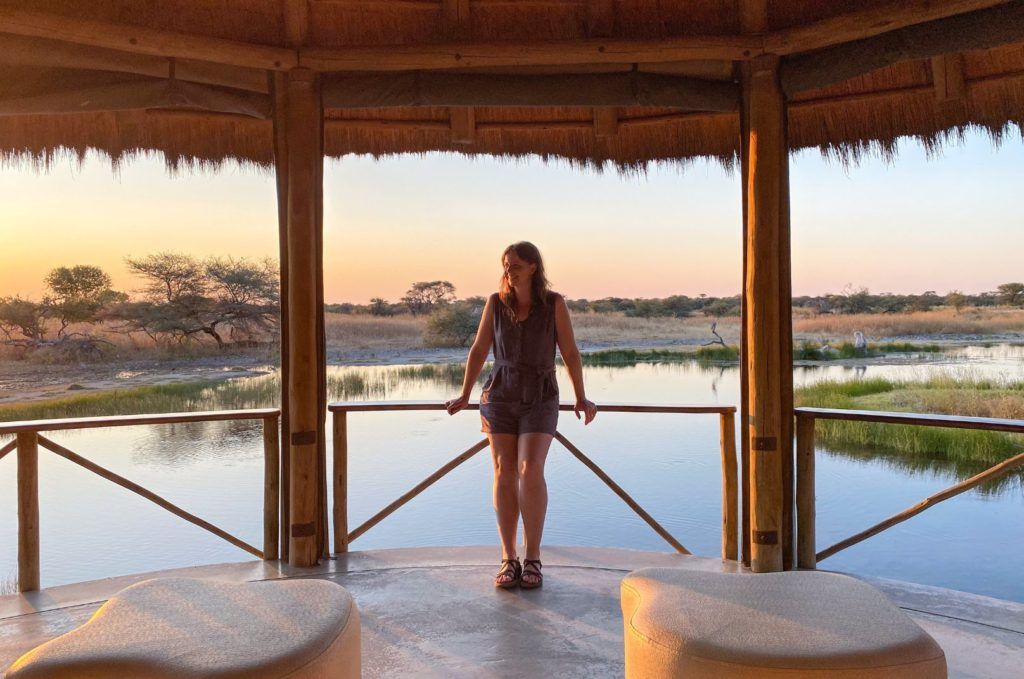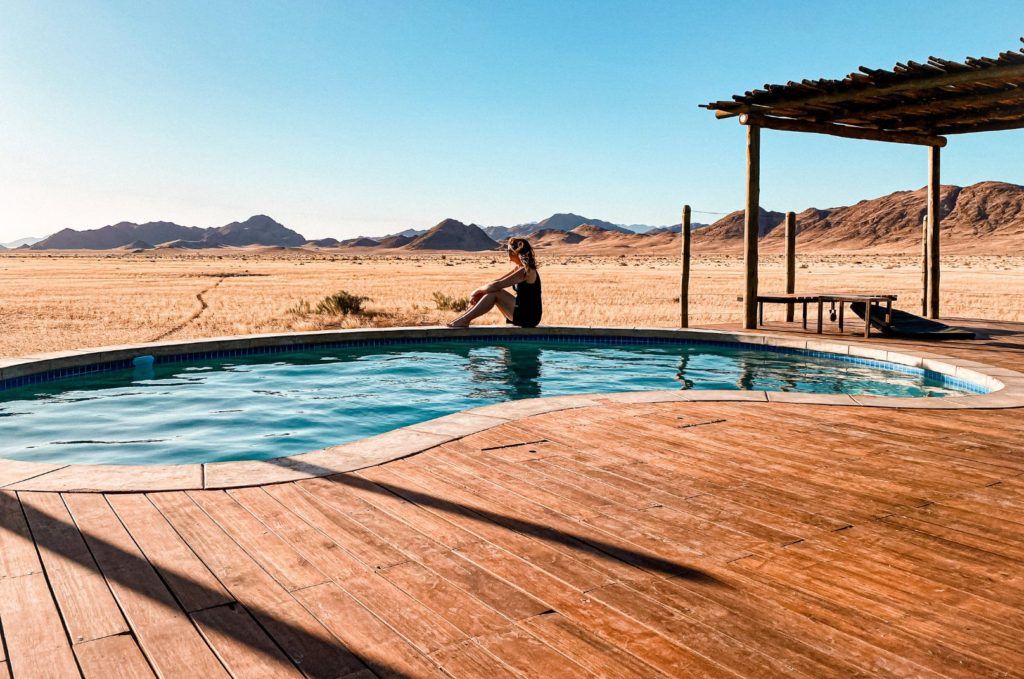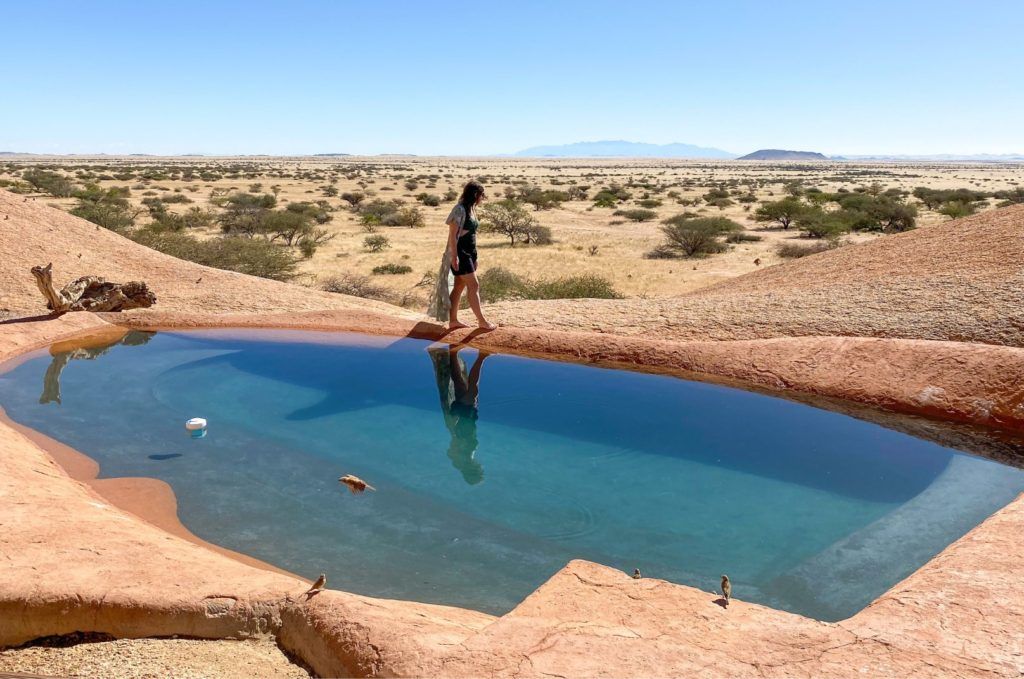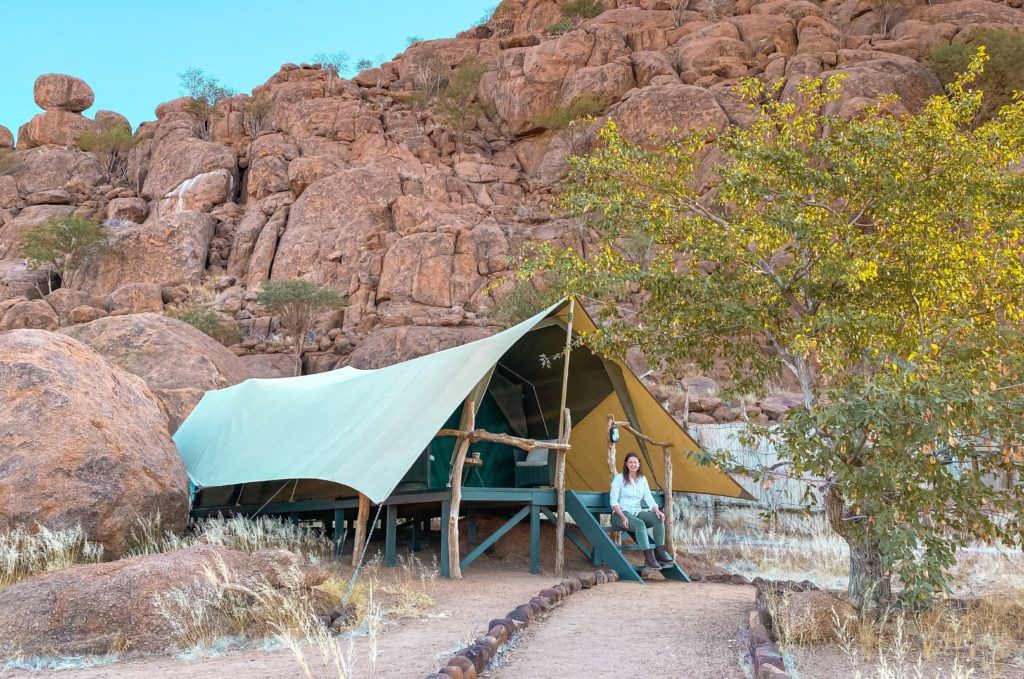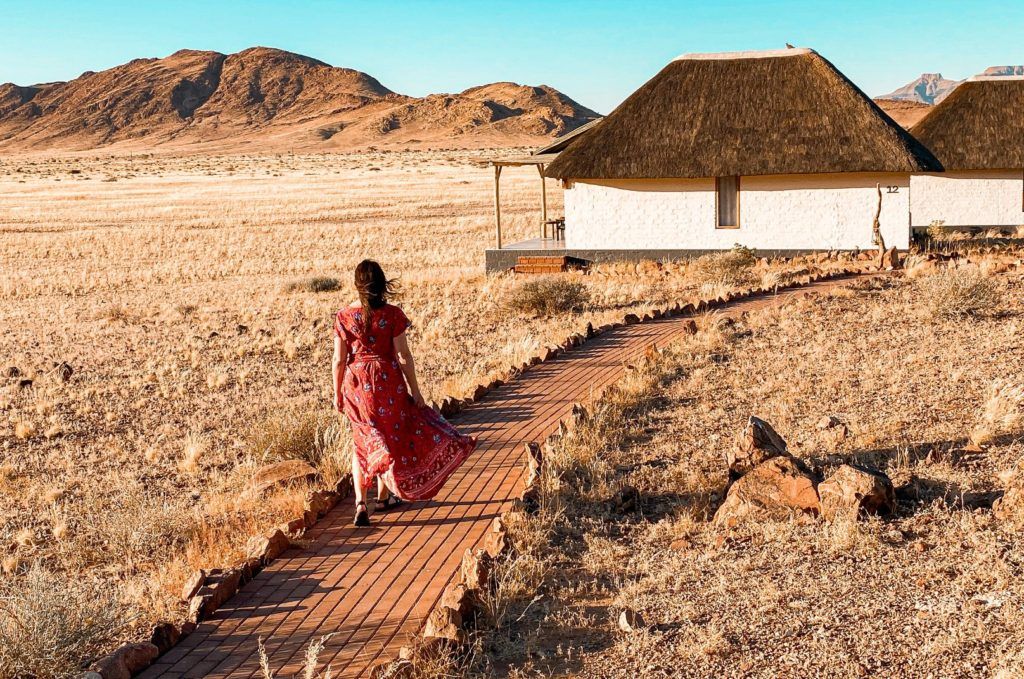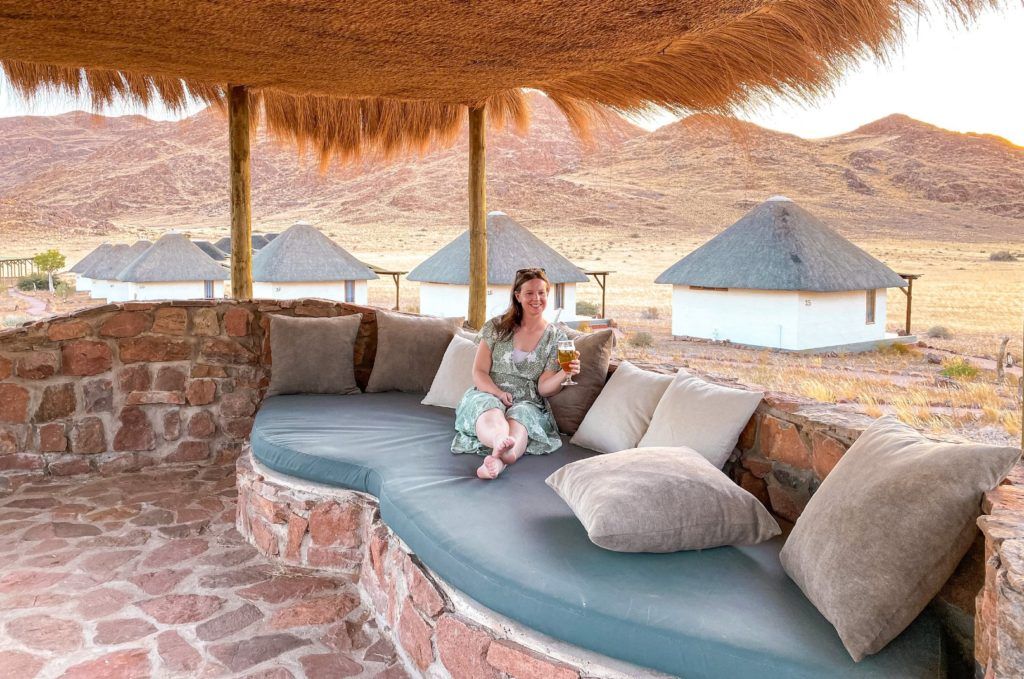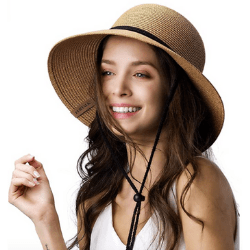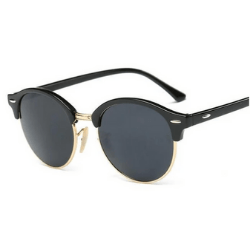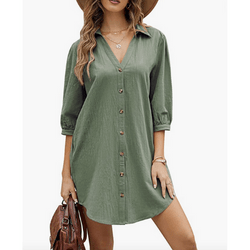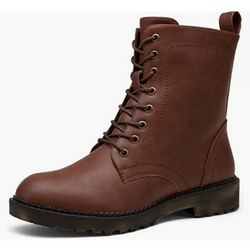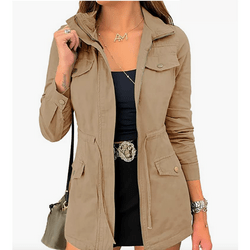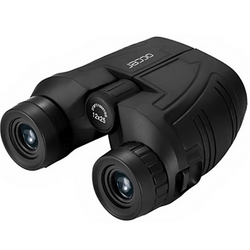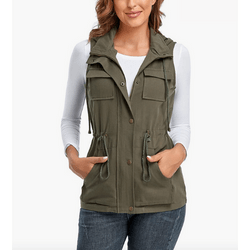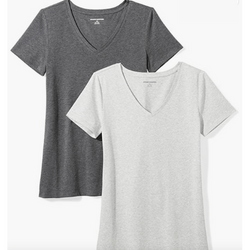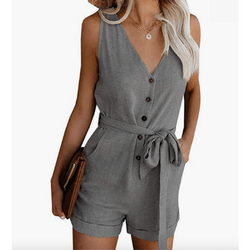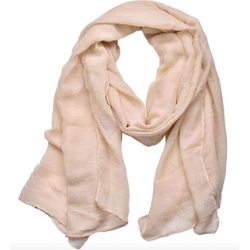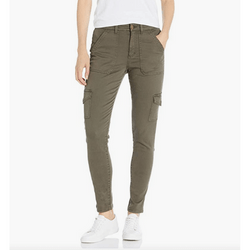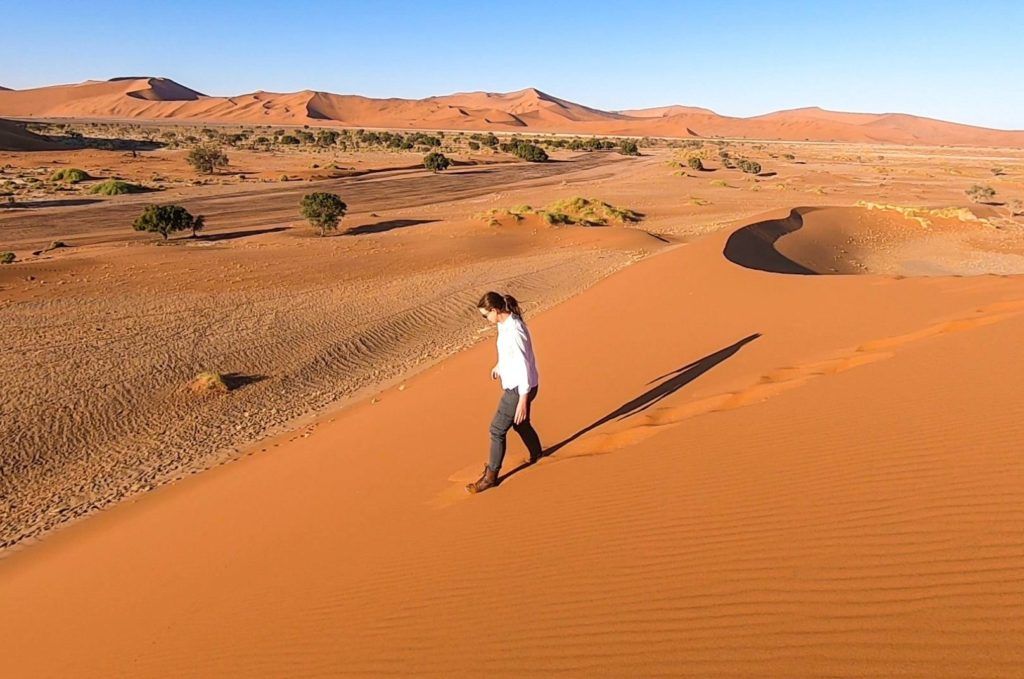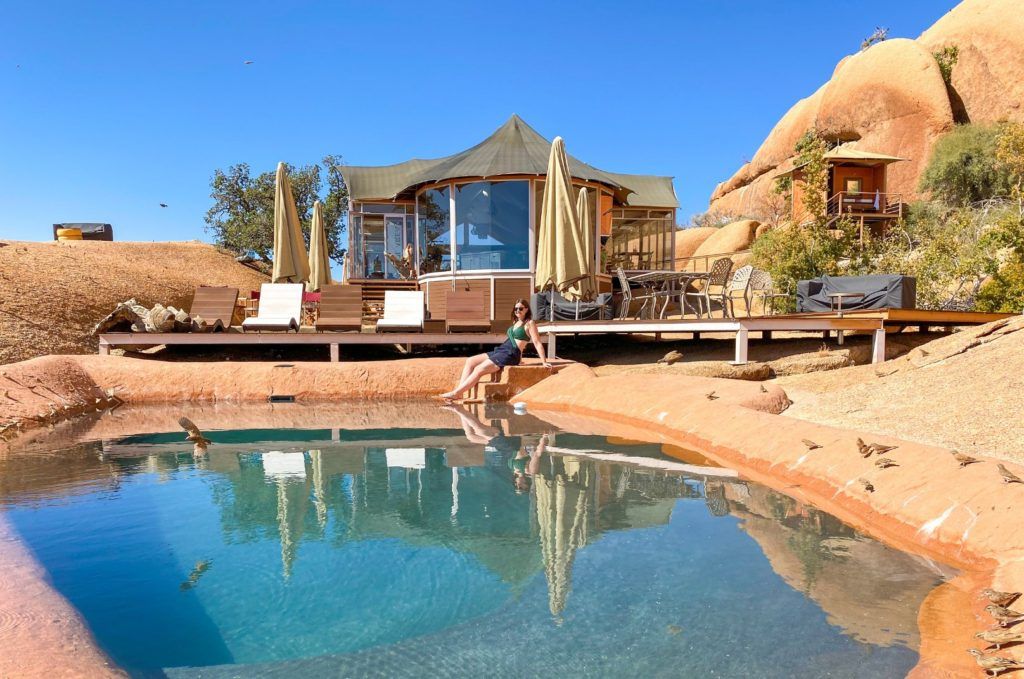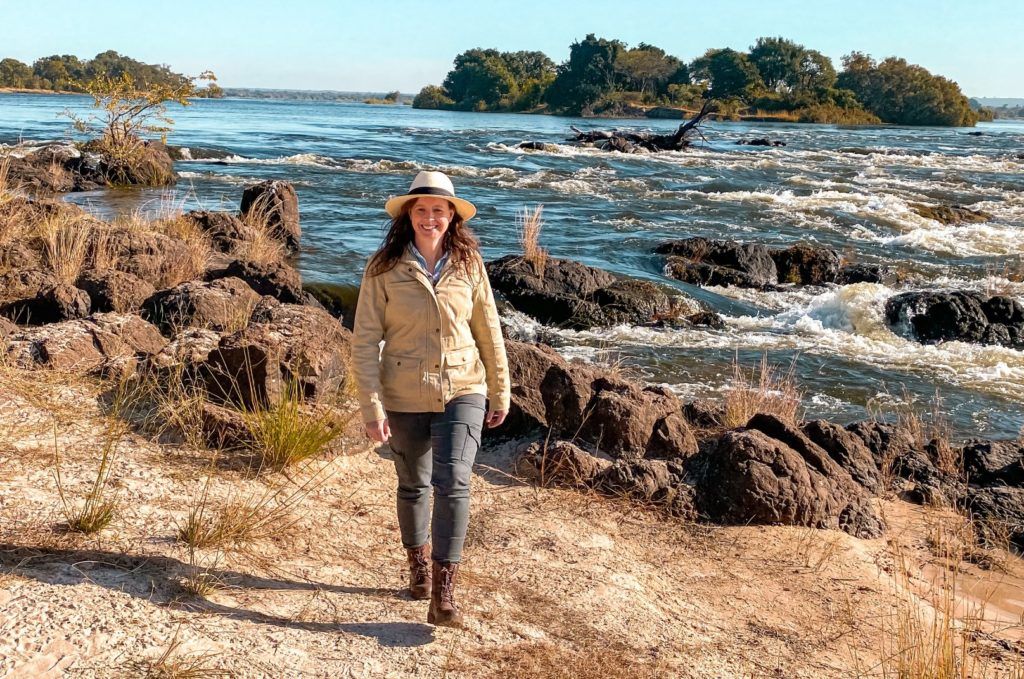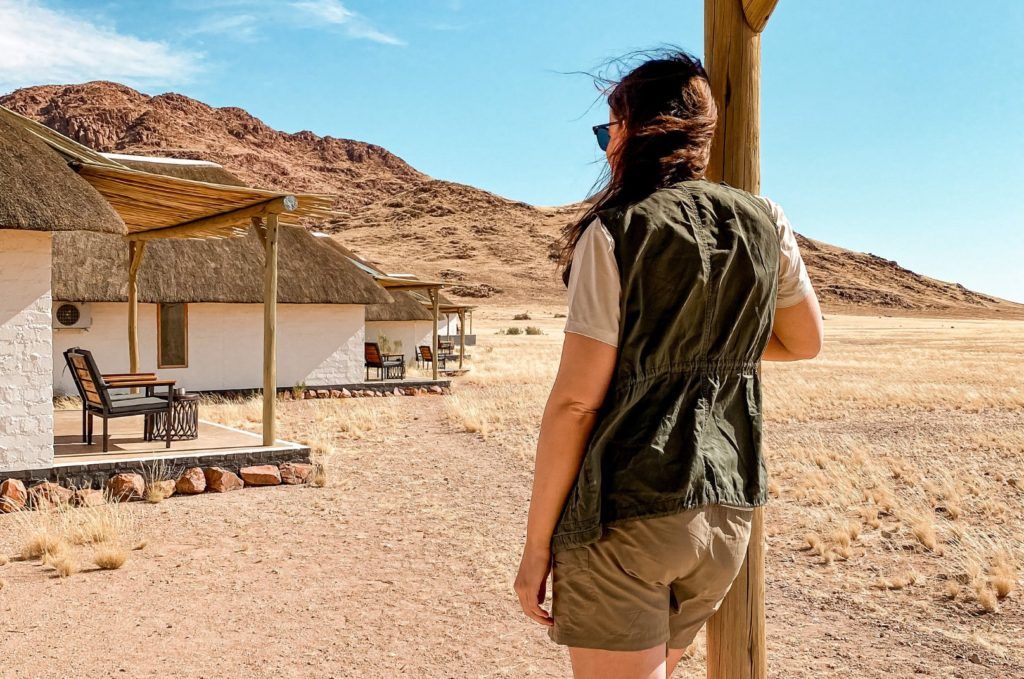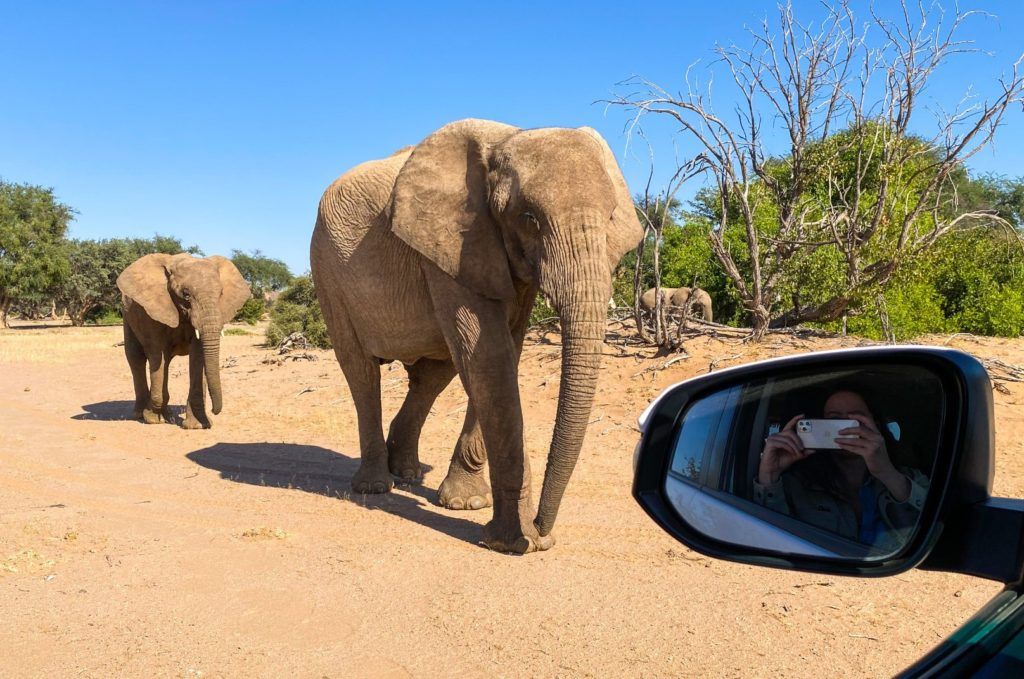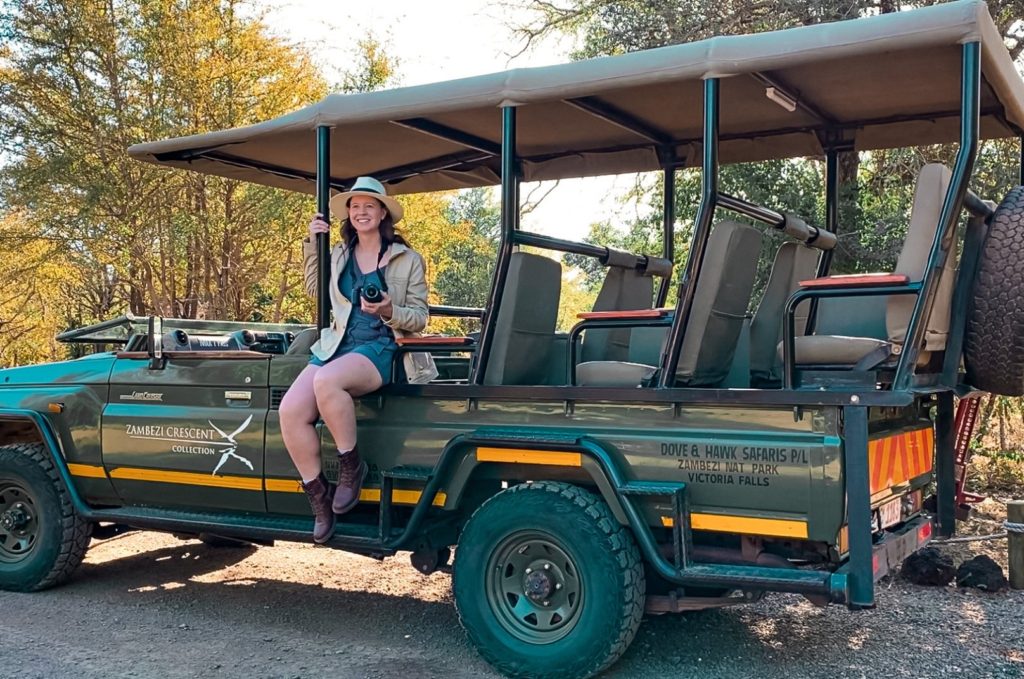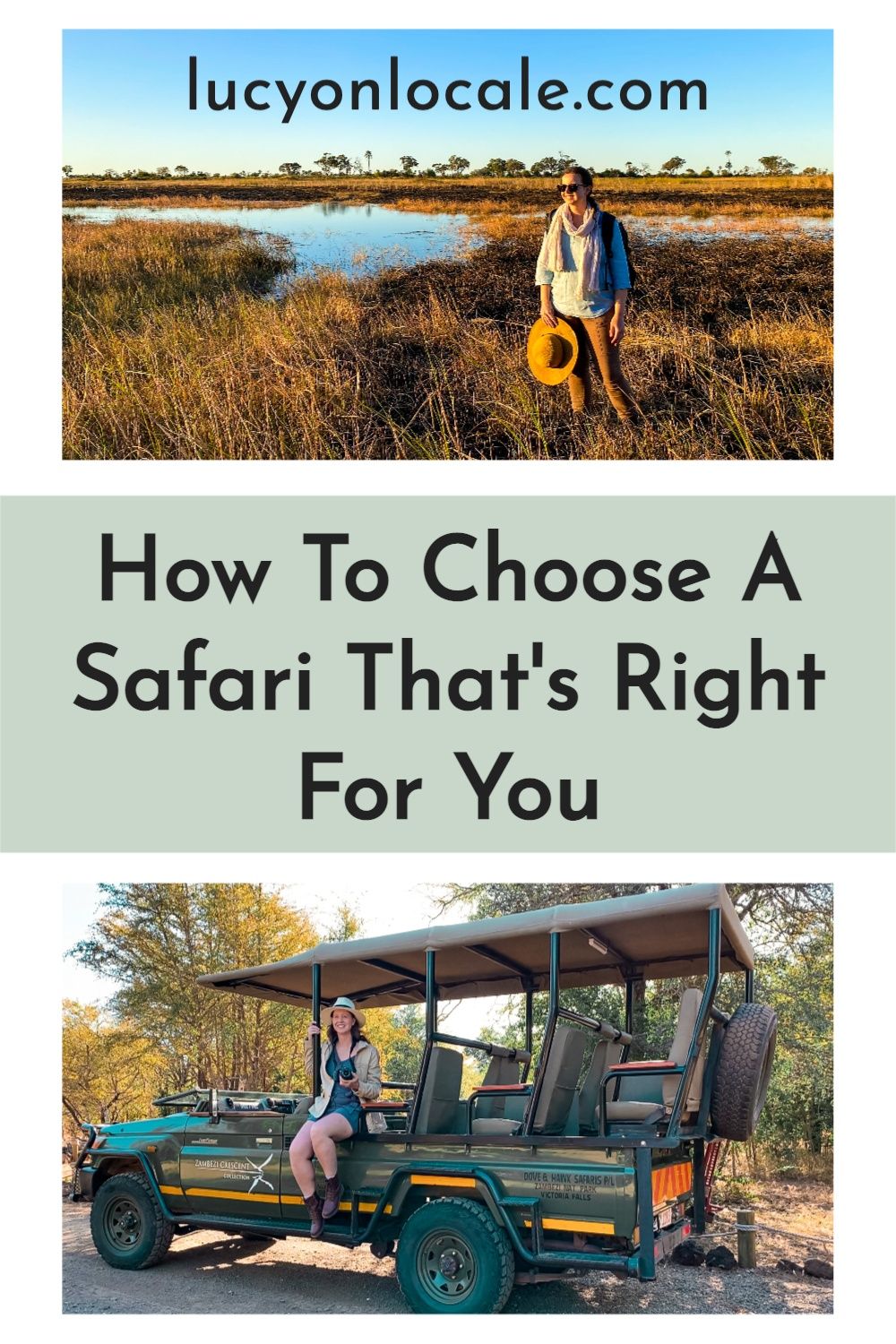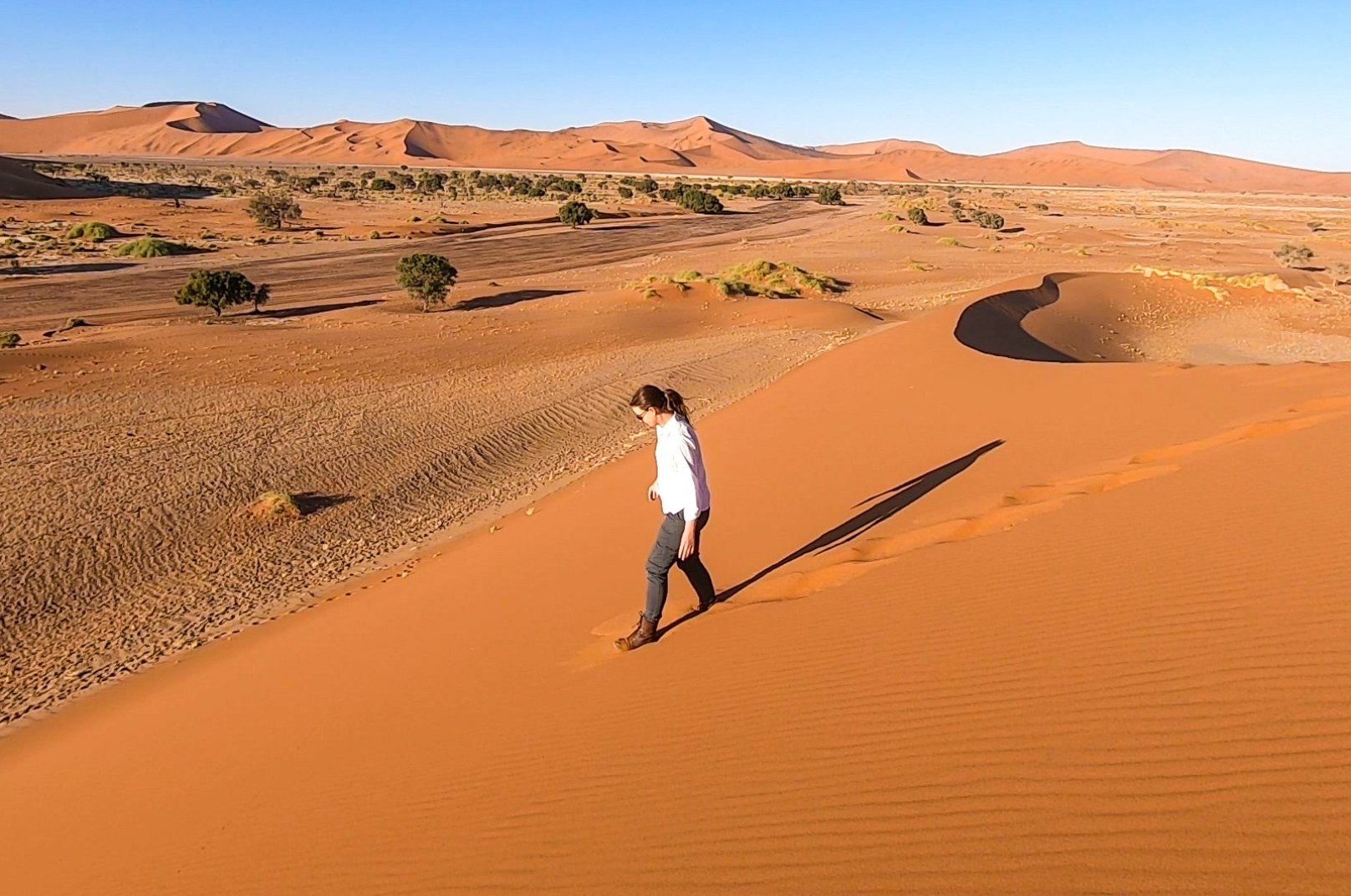
A game lodge probably comes to mind when you think of a safari. But this is just the tip of the iceberg – there are SO many different types of safari for every kind of traveler. So I created this guide on how to choose a safari that’s right for you.
The Ultimate Safari Travel Guide
During my time in Africa, I’ve done walking, driving, game lodge, tented, and almost every other type of safari. So this list will help you determine what kind of safari adventure you want to have.
Here’s how to choose a safari that’s right for you!

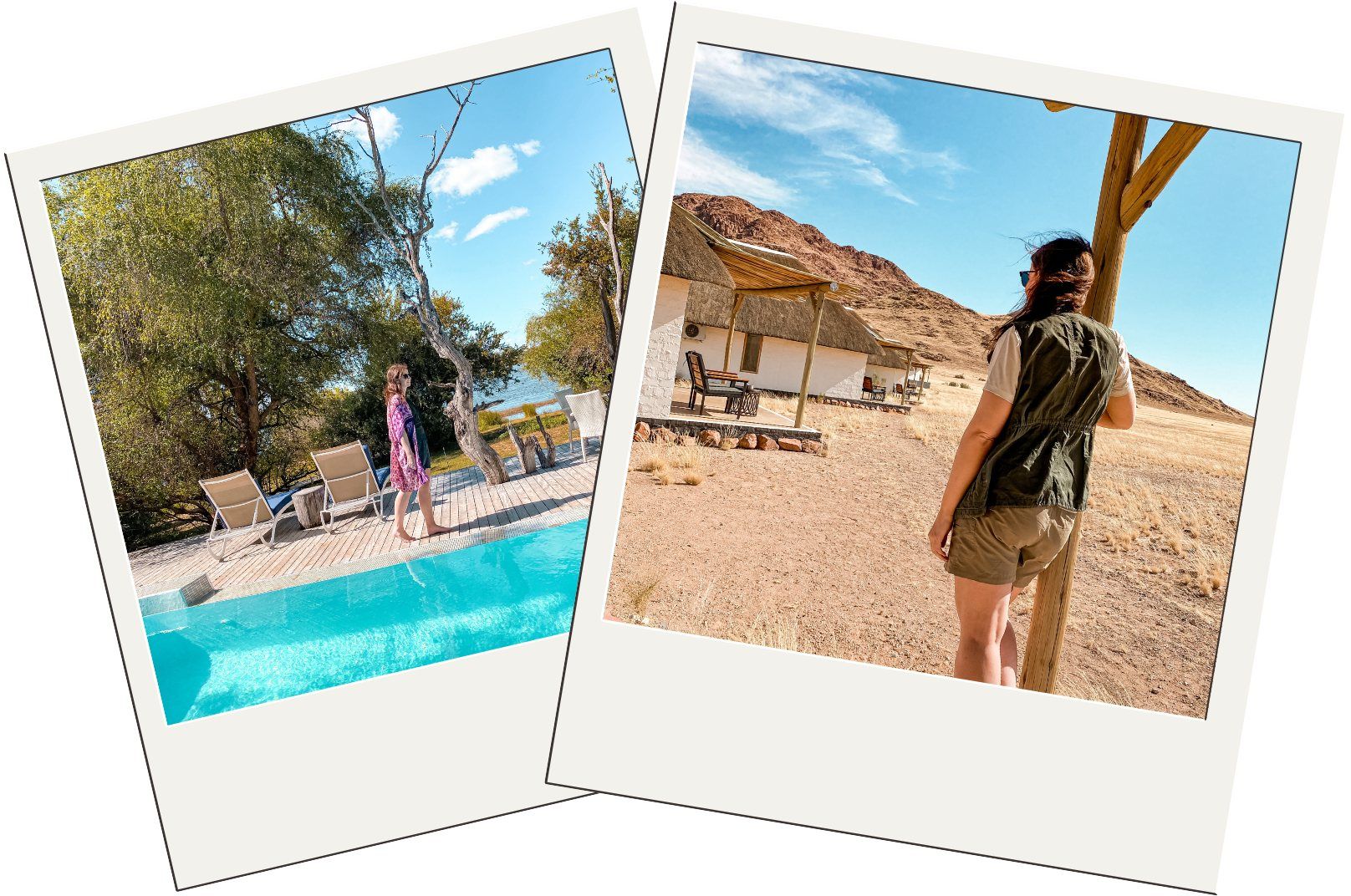
Game Lodge Safari
Game lodges are the most common type of safari. These accommodations are designed like self-contained resorts. You’ll have permanent rooms to sleep in and amenities such as pools, spas, and bars.
Most game lodges have set activities (predominantly morning and evening game drives) that every guest will choose from.
The dreamiest game lodges I’ve stayed at are Victoria Falls River Lodge, Desert Homestead Lodge, Spitzkoppen Lodge, and Onguma Forest Camp.
Game Lodges are usually the most expensive type of safari, but I’ve never regretted splurging on a game lodge!

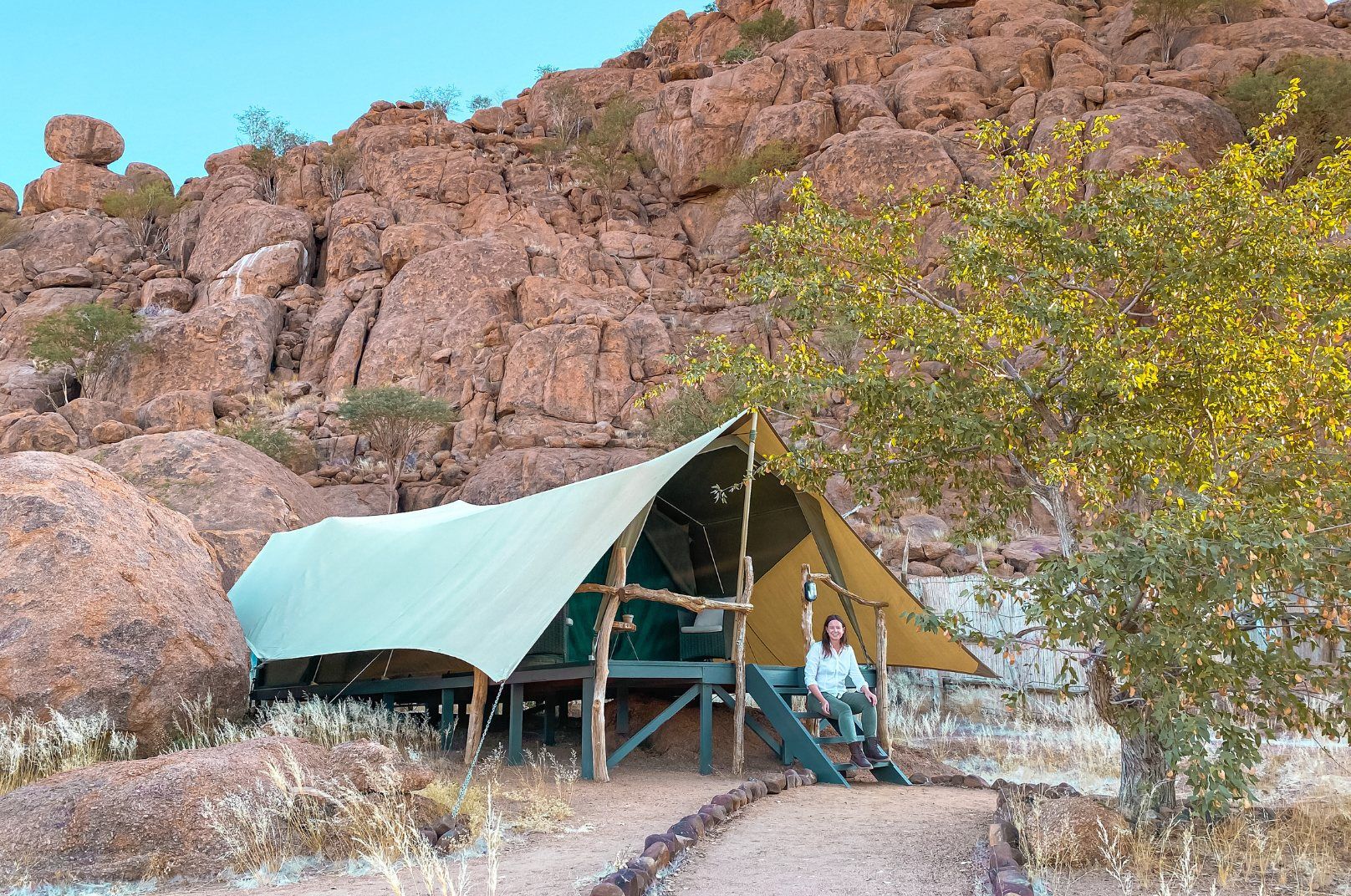
Tented-Camp Safari
Tented-camp safaris (also called bush camps) are a classic option that’s an homage to the early explorers who used to camp in the bush. An example is Twyfelfontein Adventure Camp, one of my favorite tented-camp properties.
Most tented-camp safaris would be considered glamping. You’ll stay in semi-permanent tents, and there will be a permanent dining area. Bush camps range from utilitarian to luxury properties with pools. So, tented-camp safari lodges offer a wide range of budget options.
One of the biggest perks of a bush camp is that they’re usually smaller, more remote, and less noticeable to wildlife than game lodges. So tented-camps are prime spots for unspoiled views of Africa’s natural beauty.

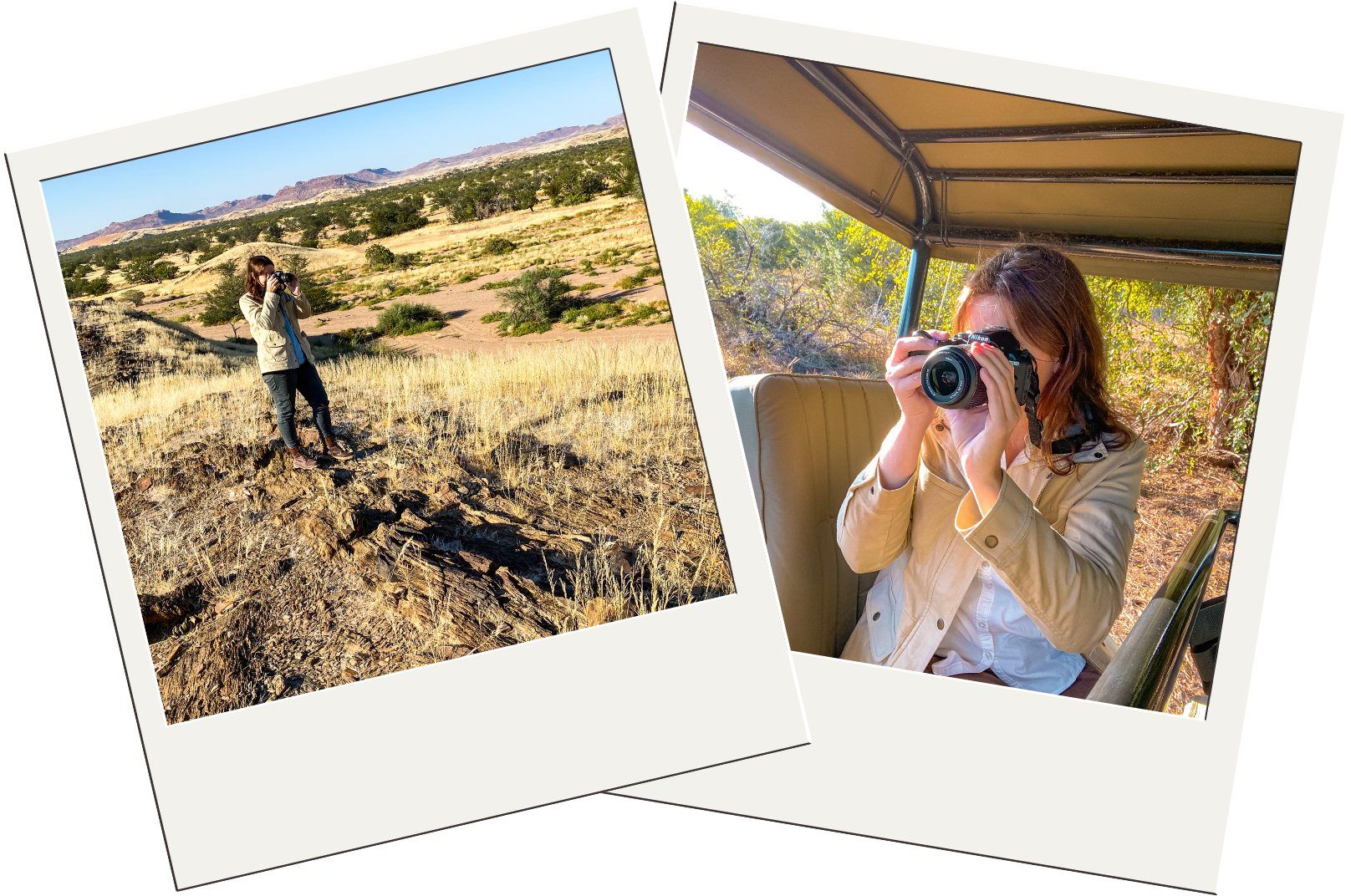
Photography Safari
Photography Safari
Everyone on any safari will take photographs. But if getting a worthy-of-National-Geographic shot is your primary reason for wanting to go on a safari, you need to choose a guided photographic safari.
This is usually a small group of adults with one or two designated guides. The small group number will ensure everyone has a “window” seat on game drives. And the designated staff will drive, park, and guide in a way that’s conducive to taking photos of (instead of just seeing) wildlife.
Many photographic safaris even have a professional photographer go with you to supplement your gear and to help you get the perfect shot. Some safari lodges have one-off photographic safari activities that guests can choose from during their stay.
But if you’re a serious photographer, I recommend booking a full-on photographic tour where every activity you do on safari will be with like-minded people working together to get that epic photo.

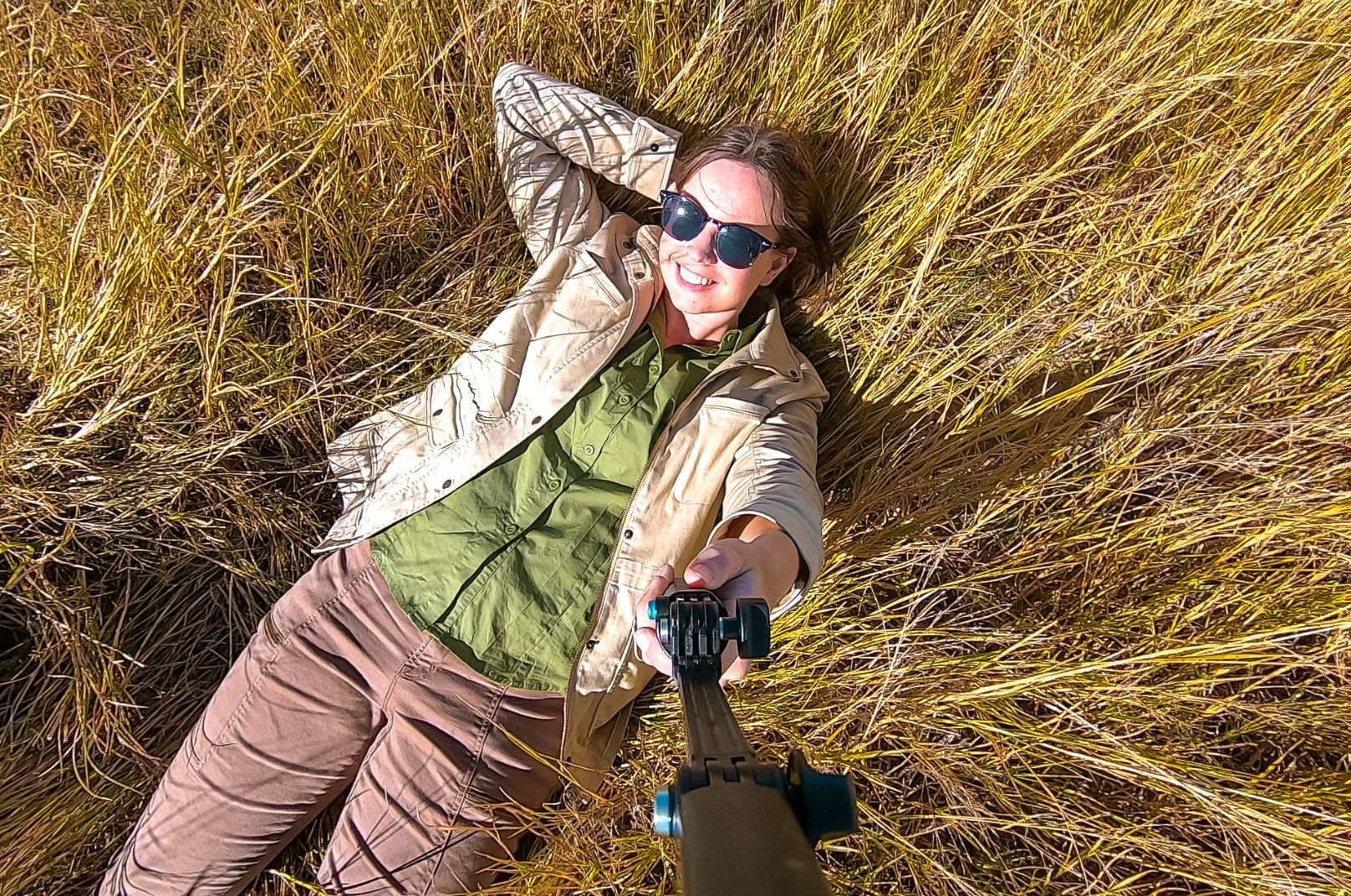
Cycling Safari
Cycling safaris are where you explore the African bush via a mountain, fat tire, or e-bike. Many safari lodges will have leisurely biking excursions any guest can opt into. If you’re a novice biker, this could be a good option.
If you’re a hard-core biker, I recommend joining a guided biking safari tour. This type of cycling safari usually has two options. The first is where you’ll stay in one lodge or bush camp, cycle in different directions each day, and return to the same accommodation.
The second option is biking from one camp to another on a bike route through a country or region.

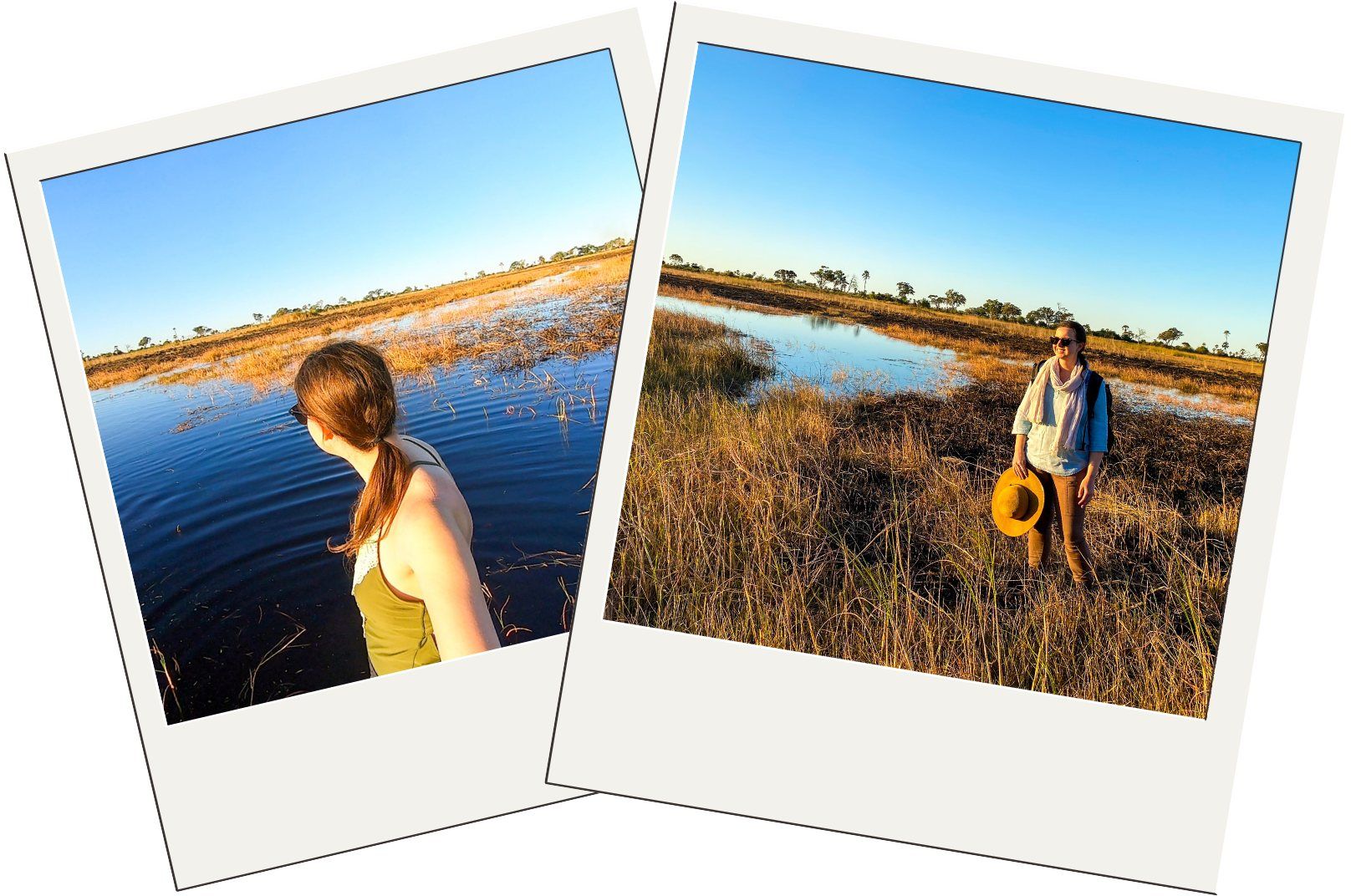
Walking or Riding Safari
A walking safari is when you explore the African bush on foot without any motorized vehicle. I did a walking safari with David Food Safaris in Botswana, and it was one of the most incredible experiences I’ve ever had. David also guides horseback safari to explore the bush the way the early explorers did!
My group (me, four other guests, and our two guides) camped in the bush next to a pond of hippos, and every day we’d set out in a different direction to see what wildlife we could track on foot or horseback. We were hours from the nearest town, so our campsite was the only sign of civilization.
My Experience on a Walking Safari
We walked nearly ten miles through thick bush every day, carrying our own gear for the few hours we were out walking. So you need to be in good physical condition for this type of safari.
But nothing compares to walking in the footsteps of lions, feeling the savannah grass against your skin, and having nothing between you and the wildlife except your camera.

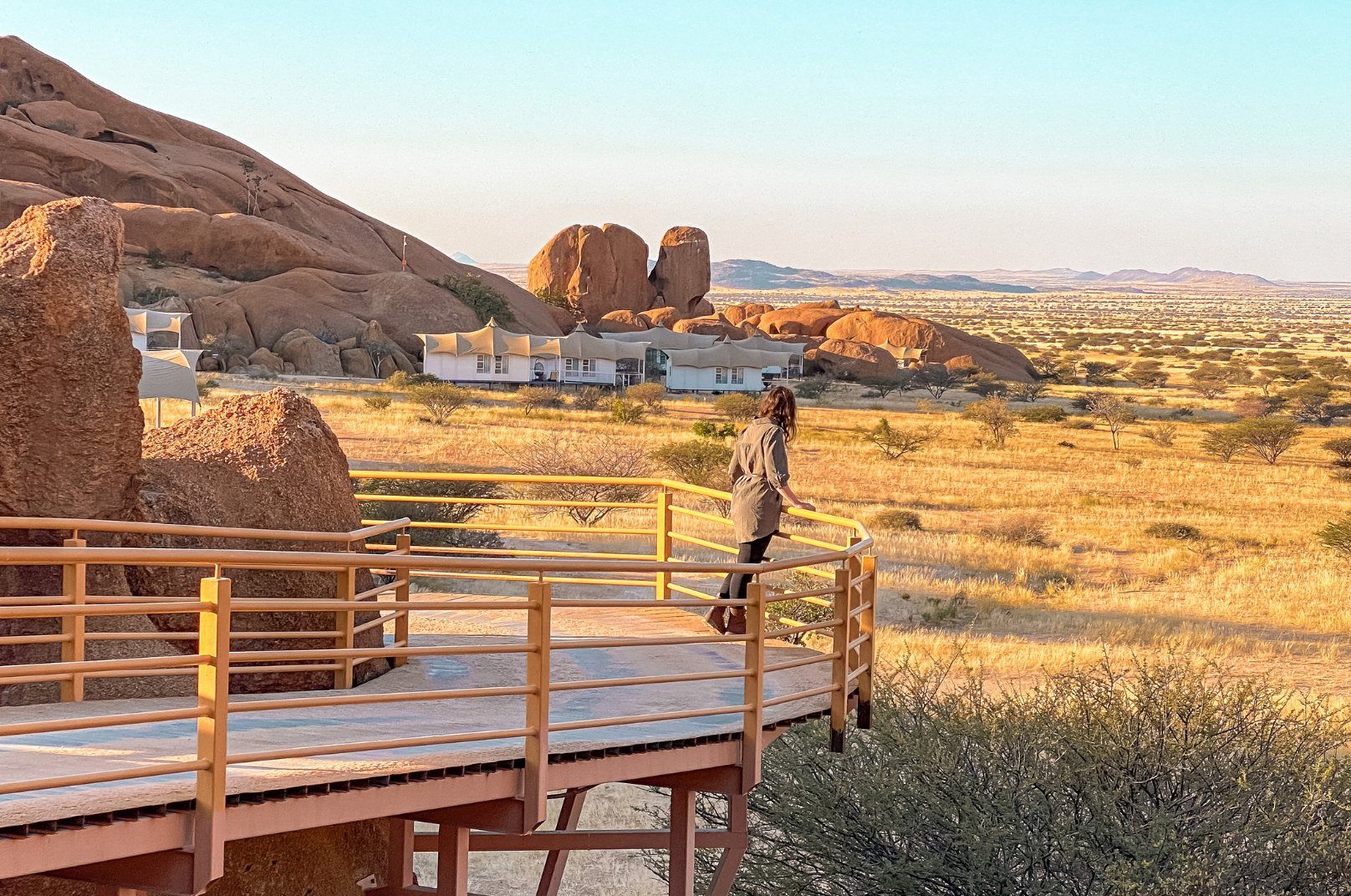
Adults-Only Safari
A safari (of any kind!) is an incredible experience to have with your children, grandchildren, nieces, or nephews. But if you aren’t traveling with children, I recommend opting for an adults-only safari lodge, tour, or camp.
This will ensure you have a calmer, more tranquil, quieter, and less-crowded safari experience.

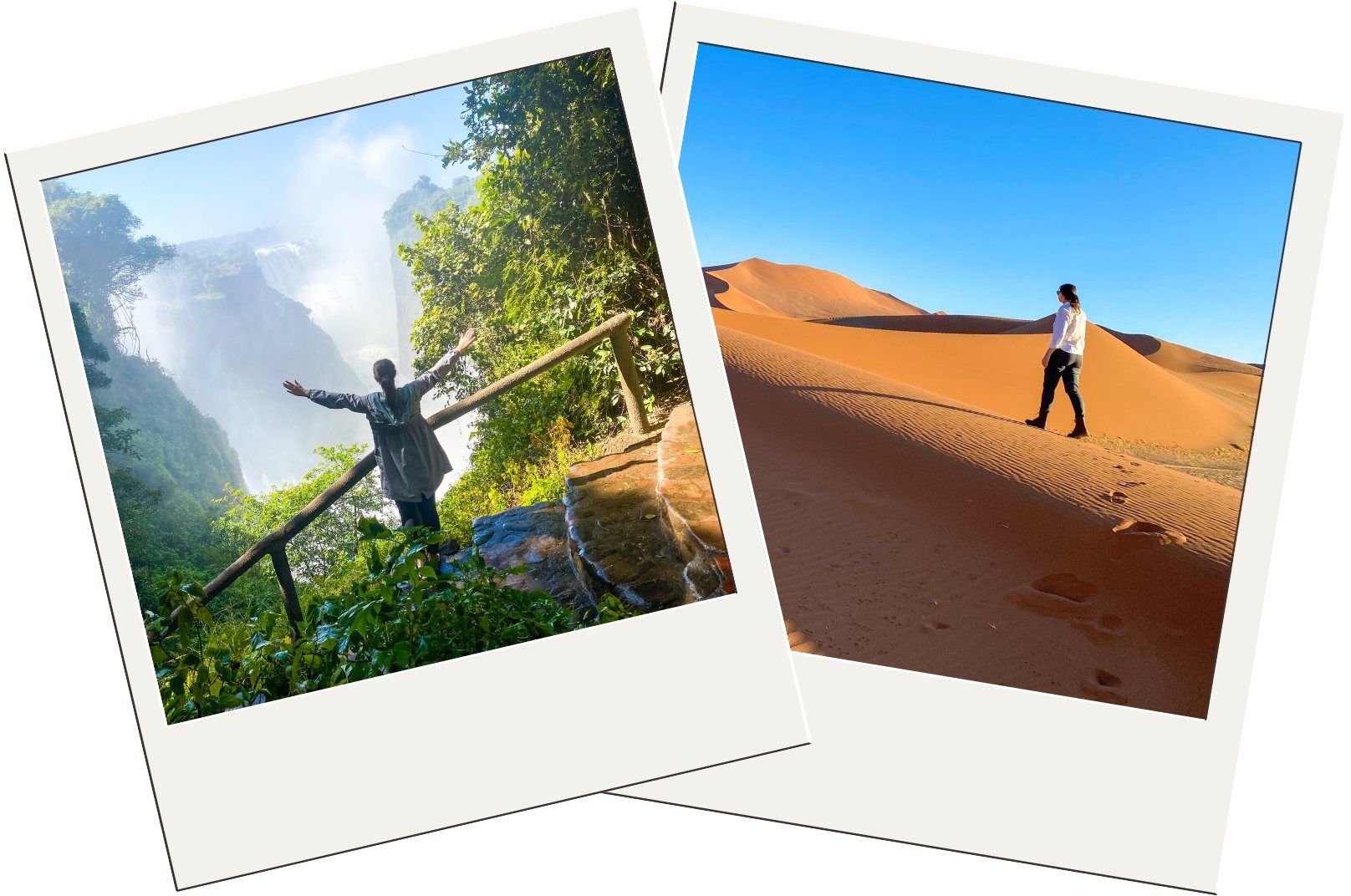
Driving Safari
A driving safari is the most epic road trip you can take. Namibia and South Africa are two of the most popular destinations for this type of safari. You’ll stay a couple of nights in several safari lodges or bush camps along a driving route.
In Namibia, I hired a guide, Eric, for a two-week driving safari through the country. Eric and stayed at six different lodges (from luxury bungalows to glamping tents), and I was able to see almost all the highlights of this incredible (and incredibly large) country.
You can also do a self-driving safari. Many tour operators have self-drive tour packages. The tour company will work with you on your route, make your reservations, and ensure you come prepared with any necessary knowledge or equipment.
Then you pick up your rental car when you arrive and hit the road!
If you opt for a self-drive safari, I STRONGLY suggest you have a GPS, a satellite phone, and the ability to plug and change a tire yourself.

Shop My Safari Essentials

What would you add to this post about how to choose a safari that’s right for you? Share with us in the comments!

For Planning The Rest Of Your Safari

Frequently Asked Questions
How do I plan a safari?
Most people have sticker shock when they see the cost of a safari. Safaris are expensive, but you get what you pay for, so don’t skimp.
Remember that safari accommodations are usually all-inclusive, where all your food, lodging, alcohol, game drives, transfers, and other activities are included. So the only additional costs would be your flights and tips.
I recommend opting for all-inclusive options, unless you’re road tripping. If you’re staying at a different accommodation every couple of nights and/or hiring a driver or guide, the all-inclusive rate might not be the best choice.
As a general rule of thumb, you should plan on spending a minimum of $1,000 per night per person at an all-inclusive resort. You can find cheaper options, but this is a red flag for your experience, the service you’ll receive, and how the lodge treats wildlife and locals.
If you need to reduce your safari costs, take a shorter trip. A three-day safari at a lodge of your dreams will be a better trip than a week-long safari at an accommodation you have to settle for.
Browse my ultimate guide to budgeting for a safari to break down the financial details of your trip!
Where should I go on my first safari?
The Best Safari Destinations in Africa:
1. South Africa
2. Botswana
3. Kenya
4. Tanzania
5. Zambia
6. Zimbabwe
7. Namibia
8. Rwanda
9. Uganda
10. Mozambique
Pro Tip: go on safari in the dry season when wildlife is easier to find around water holes.
What color should you not wear on safari?
As a general rule of thumb, you should avoid dark blue and black clothing, socks, and shoes on safari. These colors attract tsetse flies. If you’re doing a walking or riding safari where you’re not in a game vehicle, you should avoid white clothes. White will get VERY dirty VERY quickly, and it will make you extremely visible to wildlife.
What to know before going on a safari?
The first thing you need to decide when planning a safari is the type of safari you want to do – game lodge, tented-camp, adults-only, walking, riding, biking, photographic, driving, etc.
Second, decide when you’re going to go on a safari.
Third, decide where you’ll go on safari. Ask yourself these questions when deciding where to go on safari:
-Are you wanting to witness a specific wildlife event? For example, if you want to see The Great Migration, you should visit Tanzania.
-Are you wanting to combine a safari with a city break, such as Cape Town? If so, pick a safari destination that’s a short drive or flight from the city you’ll be visiting.
-Do you want to road trip to see several different destinations? If so, my top recommendations would be Namibia or South Africa.
-Do you want to see a specific natural wonder, such as Victoria Falls or Mount Kilimanjaro?
-How much time do you have for your safari? Do you have time to visit multiple destinations?
My guide for choosing a safari destination will take you step-by-step through determining the perfect place for your safari!
Can you wear jeans on a safari?
I would not recommend jeans for a safari. They will absorb heat, are thick, and less stretchy than other types of pants. I always opt for cargo pants or leggings. When packing for a safari, always choose the most comfortable, breathable, soft clothes you have.
What does an average safari cost?
Safaris are not cheap, and you get what you pay for, so don’t skimp on your lodge. As a general rule of thumb, you should plan on spending a minimum of $1,000 per night per person at an all-inclusive resort.
You can find cheaper options, but this is a red flag for your experience, the service you’ll receive, and how the lodge treats wildlife and locals.
I recommend opting for all-inclusive options unless you’re road tripping. If you’re staying at a different accommodation every couple of nights and/or hiring a driver or guide, the all-inclusive rate might not be the best choice.
Be wary of overcrowding when considering an all-inclusive accommodation that’s less than $1000 a night. Before you book, establish how many guests a property can accommodate. It’s a good sign when the lodge website states how many people will be on game drives. The last thing you want on a safari is to be packed shoulder-to-shoulder with people on game drives, at the pool, at dinner, and in the common spaces.
If you need to reduce your safari costs, take a shorter trip. A three-day safari at a lodge of your dreams will be a better trip than a week-long safari at an accommodation you have to settle for.
What makes a good safari?
The top factors that contribute to a great safari are choosing a sustainable and eco-friendly accommodation and/or tour company and going at the best time of year.
The best time to go on safari in almost every safari destination is the dry season from June – October. This is when wildlife will be most visible and easy to find because they’ll congregate around water holes. These are the winter months, so bring warm clothes and layers.
If you want to see a specific wildlife event – such as The Great Migration – you’ll have a narrow window of time when you can witness this, and it’s always one of the most expensive and crowded safari sights to see.
If you’re going on safari for birding, the month immediately after a destination’s rainy season is usually the best time to visit.
What can you not do on a safari?
As a general rule of thumb, you should avoid dark blue and black clothing, socks, and shoes on safari. These colors attract tsetse flies. If you’re doing a walking or riding safari where you’re not in a game vehicle, you should avoid white clothes. White will get VERY dirty VERY quickly, and it will make you extremely visible to wildlife.

This article about how to choose a safari that’s right for you is not a sponsored post, and the thoughts and opinions expressed in this post about how to choose a safari that’s right for you are entirely my own. Some of the links in this post about how to choose a safari that’s right for you are affiliate links, and, at no cost to you, I may earn a small commission from this article about how to choose a safari that’s right for you.
 Travel Shop
Travel Shop Merch
Merch Travel Tips
Travel Tips
 Photography
Photography Points & Miles
Points & Miles Credit Cards
Credit Cards